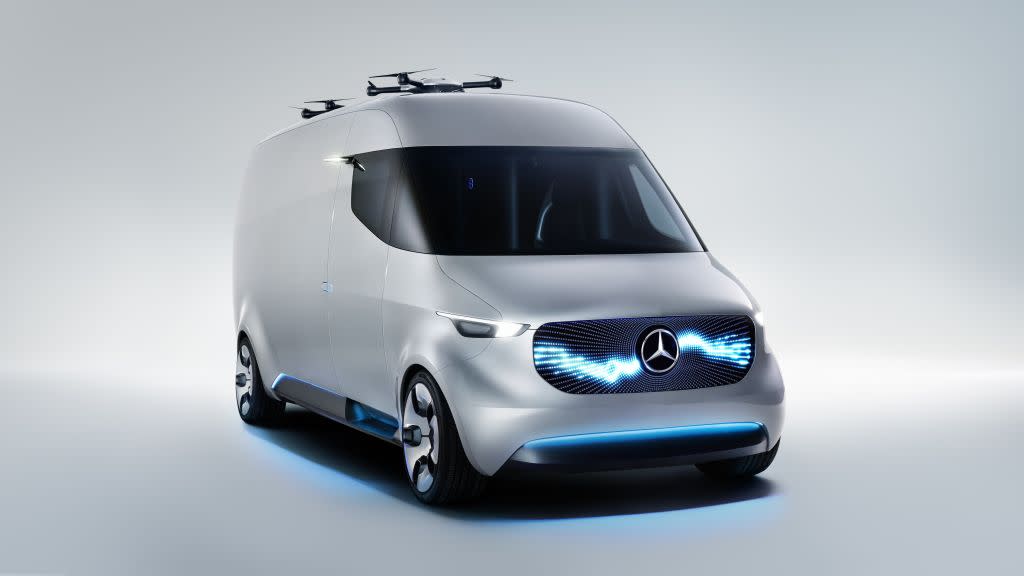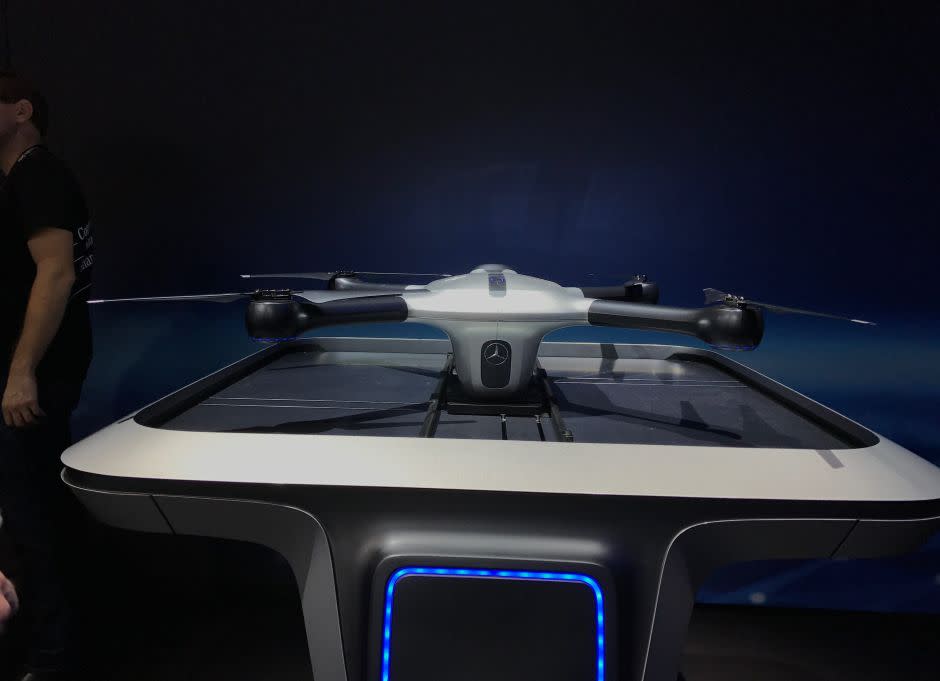Mercedes made a crazy van with built-in drones and robot arms to deliver the packages of tomorrow

A gunman shot and killed multiple people at Florida’s Fort Lauderdale Airport
" data-medium-file="https://qzprod.files.wordpress.com/2017/01/mercedes-vision-van-concept-ces-2017.jpg?quality=80&strip=all&w=700" data-large-file="https://qzprod.files.wordpress.com/2017/01/mercedes-vision-van-concept-ces-2017.jpg?quality=80&strip=all&w=1600" />
Las Vegas, Nevada
With the inexorable march of technology, nothing is safe, including the mailman.
At the Consumer Electronics Show in Las Vegas on Jan. 5, Mercedes-Benz showed its intricate vision for the future of deliveries. While it’s never been easier to transport packages across the world thanks to planes, 18-wheelers, and massive cargo ships, it’s still quite difficult to get packages into the hands of their recipients due to traffic, road conditions, and other general difficulties that befall delivery trucks.
Mercedes, however, thinks it might have the answer to this “last-mile” delivery problem: vans that utilize roof-mounted autonomous drones and robotic package-sorting devices to ferry packages from its vehicles.
Rather like Amazon’s vision for automated warehouses and drone deliveries, Mercedes’s “Vision Van” concept is meant to cut down on the amount of time it takes to sort packages for delivery as well as the actual delivery time—except it’s on four wheels. The electric van has no windows (apart from a windshield) and no steering wheel or pedals: The driver controls the vehicle with just a joystick.
In the company’s, erm, vision, the van would be loaded up at a depot center and sent on its way. But unlike a regular truck, the packages are not loaded in one by one: Like changing out a cartridge on a printer, the cargo area of the van essentially pulls out and is replaced by a new one filled with packages. The packages are all sorted and their positions made known to the robot arm inside the back of the van before it leaves. When the driver arrives at an area to deploy the drone, he or she can tell the arm to load the package onto the drone. The arm then pulls a package, along with a battery pack, that it connects to the drone through a hole in the van’s roof. The battery and package are loaded, and the drone flies to its destination.

Loading a new back onto the Vision Van.
Mercedes partnered with Matternet, a California autonomous drone company, to build the technology in its concept van—the same company the Swiss government used to test out drone deliveries through its postal service. And while Mercedes tells Quartz it isn’t planning on turning its minimalistic van-drone-combo into a production vehicle anytime soon, it represents a potential future of the speed and convenience with which we could receive deliveries. That is, however, assuming regulations allow for these sorts of drone deliveries.

Mercedes’s drone up close.
In the US, current commercial regulations, which were laid out last summer, prohibit flights like the ones Mercedes and others would like to make, as drones have to remain within the line of sight of a human pilot while flying. But other countries are more lenient: For example, Flirtey, a Nevada-based drone startup, is now delivering pizzas autonomously to customers in parts of New Zealand. US aviation authorities are also working with NASA, along with industry experts and companies, to determine how to safely integrate self-flying drones into US airspace by the end of the decade.
Given that the new technologies, especially the zanier ones, in concept cars tend to take years to trickle down into production vehicles, perhaps by the time autonomous drones are buzzing in the skies overhead delivering our dinners and Amazon orders, Mercedes will be ready to unleash a drone-sporting behemoth like the one currently gracing the halls of the Consumer Electronics Show.

Sign up for the Quartz Daily Brief, our free daily newsletter with the world’s most important and interesting news.
More stories from Quartz:

